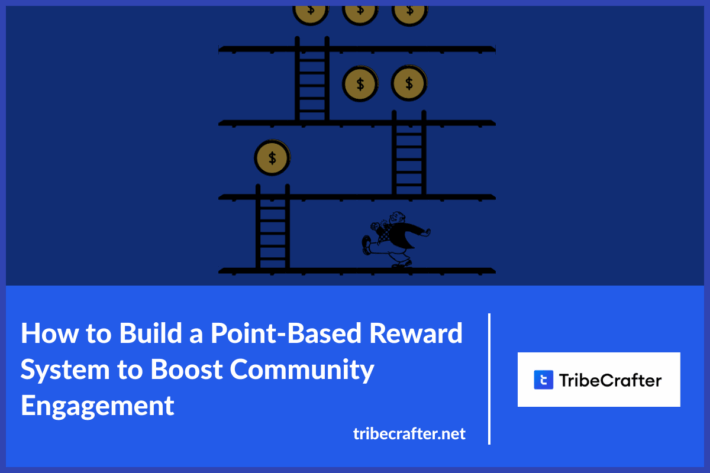Badges for Online Communities: Boost Engagement with Gamified Recognition
One of the best resources for encouraging motivation, connection, and appreciation in online environments is the community badge. These tiny yet potent symbols can stand in for a member’s accomplishments or contributions, gamifying the experience and creating a sense of achievement. Badges are an effective way to boost engagement in an online community and make discussions more efficient.
In this guide, I will cover the idea of community badges, what they do, and how to use them to strengthen your community engagement strategies and improve member loyalty.
Table of Contents
What is a community badge
Community badges are visual indicators or symbols that are given to members of a community forum or online community to represent responsibilities, accomplishments, contributions, or participation levels. These badges can promote involvement and a feeling of community and frequently serve as a means of acknowledgment.
In technical terms, community badges are a combination of embedded metadata and visual representations, such as PNG file images. The earned badges are visible on the members’ profiles.
Why community badges are important?
Badges that signify the author’s authority or the user’s duration of community participation will influence how well users comprehend the content when gamification designs are used to implement a badge achievement system in the community.
People think that senior members’ and administrators’ remarks are “more authoritative,” and their contributions are “more trustworthy,” which draws greater attention and conversation. The badges’ increased visibility, according to the administrators themselves, makes them more conscious of their actions and creates a positive sense of community.
A few key players in most communities maintain the dialogue and make sure everyone else gets what they require from the group. These people are the most valuable resource in your community, thus it’s critical to acknowledge them.
An excellent tool for giving this kind of acknowledgment is a badge. They help other users identify the most knowledgeable, helpful, and regularly responsive individuals.
Badges motivate the community members
Receiving a badge instantly increases a user’s motivation to remain active in the community. They get a better understanding of their function and relationship to other users, as well as a sense of belonging within the community.
People have an incentive to return again and time again when they see tangible evidence that they are an important member of the community.
Giving active members a badge is a comparatively simple method to express your gratitude for their contributions to your community and the benefits they offer to you and other members.
Customers that contribute the most frequently and in the most beneficial ways can be given badges, which will encourage them to do more by rewarding their efforts.
Those that receive badges experience the satisfaction of knowing that their contributions are valued. They are aware that the status they have acquired will be seen by their peers, increasing their visibility in the community. Demonstrating your presence to members of the community builds rapport and encourages them to continue attending.
Importance of badges for customer communities
The ability of your customers to support one another is one of the biggest advantages of having a customer community. These initiatives can be further scaled with the aid of badges.
Due to their practical expertise or distinct understanding of particular verticals or use cases, they might even be more qualified than your staff to assist other community members as customers. Customers understand what it’s like to use the product on a daily basis, while employees have knowledge and ideal situations about how it should work.
When a business relies on community members to help scale support, it is particularly crucial to signal the types and levels of knowledge. Other members of the community can be reassured that they are speaking with a legitimate person when they see a badge next to their name.
Types of community badges
Loyalty Badges
These badges honor a person’s devotion to the community.
Engagement badges
All it takes to obtain these badges is to participate in the community in some way. Such as frequent poster, conversation starter.
Achievement Badges
These badges demonstrate the caliber and significance of the contributions made by members.
Leadership Badges
Members that have a good impact on the community are recognized with these badges. Such as Community leader, mentor, Peace maker.
Growth badges:
Reflect personal or community growth milestones.
- First Post
- 100 Comments Club
- Level Up – for completing onboarding or hitting key milestones
Event & Campaign Badges
Awarded for attending events, webinars, or participating in campaigns.
- Webinar Attendee
- Hackathon Participant
- Launch Day Supporter
Values & Culture Badges
Aligned with brand/community values.
- Kind Contributor
- Inclusive Voice
- Sustainability Advocate
- Feedback Giver
Real life examples community badges
Discuz!
Different badge designs are used in communities as a way to encourage members to take part in events. In its Discuz! X2.5, the popular online discussion site Discuz! has also made available a badge feature.
Stack Overflow
To incentivize users to engage in community activities, Stack Overflow has created distinct achievement badges for various user scenarios and preferences. Stack Overflow offers a range of medals for various user levels to incentivize users to respond to queries. For instance:
Guru Badge:
When a member’s responses are approved by the the inquirer and earn more than 40 points, they are awarded the Guru badge.
Self-learner badge
Members who answer their own queries and receive more than three points are awarded the Self-Learner badge.
Tenacious badge
If a member has more than five zero-scored answers, or if zero-scored answers make up over twenty per cent of their overall responses, they are represented by this badge.
How to use community badges to grow your community
Align Badges with Your Business Goals
Gamification can significantly boost engagement in your online community—but it should serve a purpose. When designing your badge system, start by defining the outcomes you want to drive, such as increased participation, content creation, or customer retention.
Let your business goals shape the structure and criteria of each badge.
Use badges for interactive activities
Don’t encourage monotonous or repetitive activities because they aren’t stimulating in real life and are even less so online, especially when people have access to so many more fascinating activities at their fingertips.
Keep a balance
Avoid making an accomplishment more noteworthy than it needs to be. Put differently, don’t award too many badges or you run the danger of devaluing them all.
Be flexible
Keep track of the badges that generate the greatest activity or interaction. Adapt your badge system to members’ motivations.
Engage your community in creating new badges or choosing which accomplishments merit rewards. The ties throughout the community are strengthened by this inclusivity.
Conclusion
Badges have the power to turn inactive users into active participants and build a vibrant, dynamic online community when used properly.
Whether you’re running a private group, educational platform, or brand community, the right badge system can drive deeper engagement and long-term loyalty. Ready to level up your community experience? Start designing a badge system that aligns with your goals — or explore how TribeCrafter can help you implement one effortlessly.
TribeCrafter’s gamification tools are on the way — sign up now to get early access.
Gamification Badges for Online Communities – FAQs
1. What are community badges and how do they work?
Community badges are visual symbols awarded to members for specific actions or achievements within an online community. They help recognize participation, contributions, or milestones, encouraging continued engagement.
2. Why should I use badges in my online community?
Badges gamify the experience, making your community more engaging and rewarding. They motivate members to contribute, stay active, and feel a sense of accomplishment, which strengthens retention and loyalty.
3. What types of badges can I include in my community?
Popular badge types include:
- Participation badges (for attending events or discussions)
- Achievement badges (for completing tasks or courses)
- Leadership badges (for moderators or top contributors)
- Loyalty badges (for long-time members)
4. Do badges actually improve community engagement?
Yes. When implemented thoughtfully, badges can significantly increase engagement by giving users goals to work toward and recognition for their efforts. They tap into intrinsic motivation and social proof.
5. How do I implement a badge system on my community platform?
Most modern platforms offer built-in badge features or plugins. Alternatively, if you’re looking for flexibility and customization, tools like TribeCrafter make it easy to design and manage badge systems tailored to your goals.



